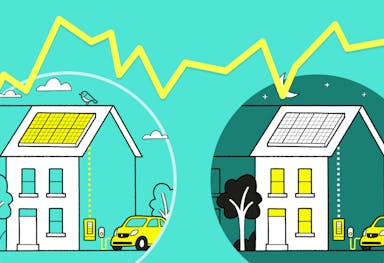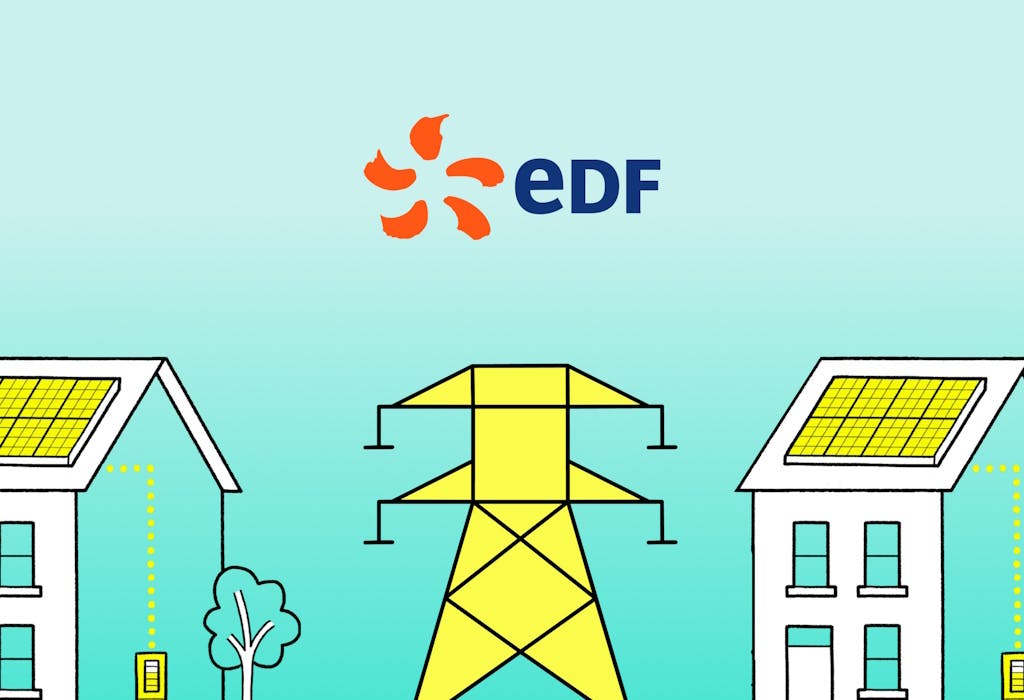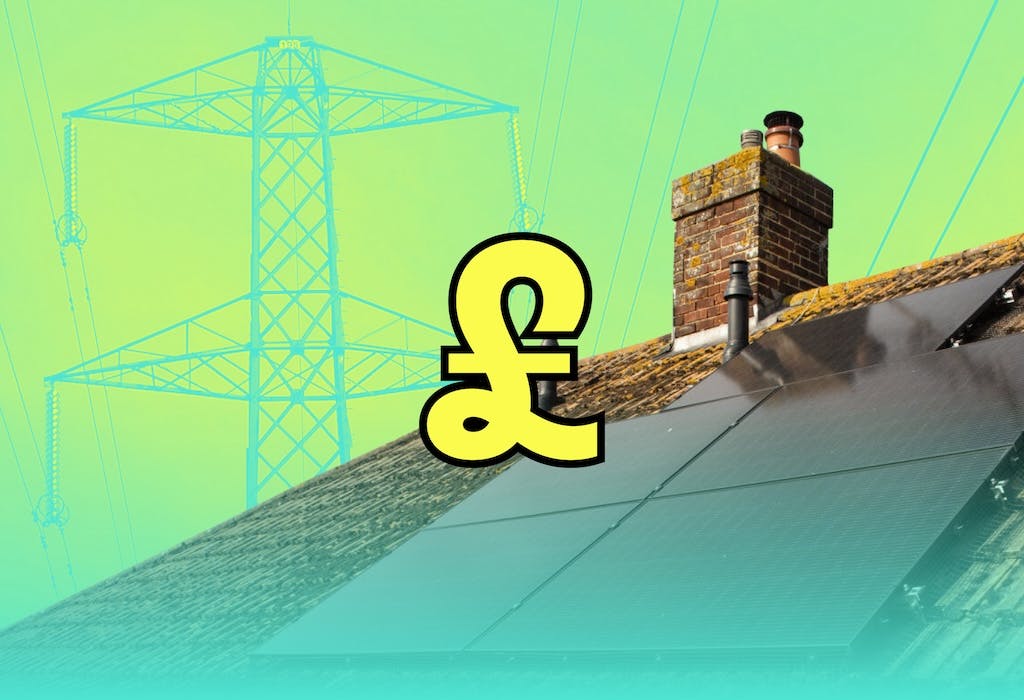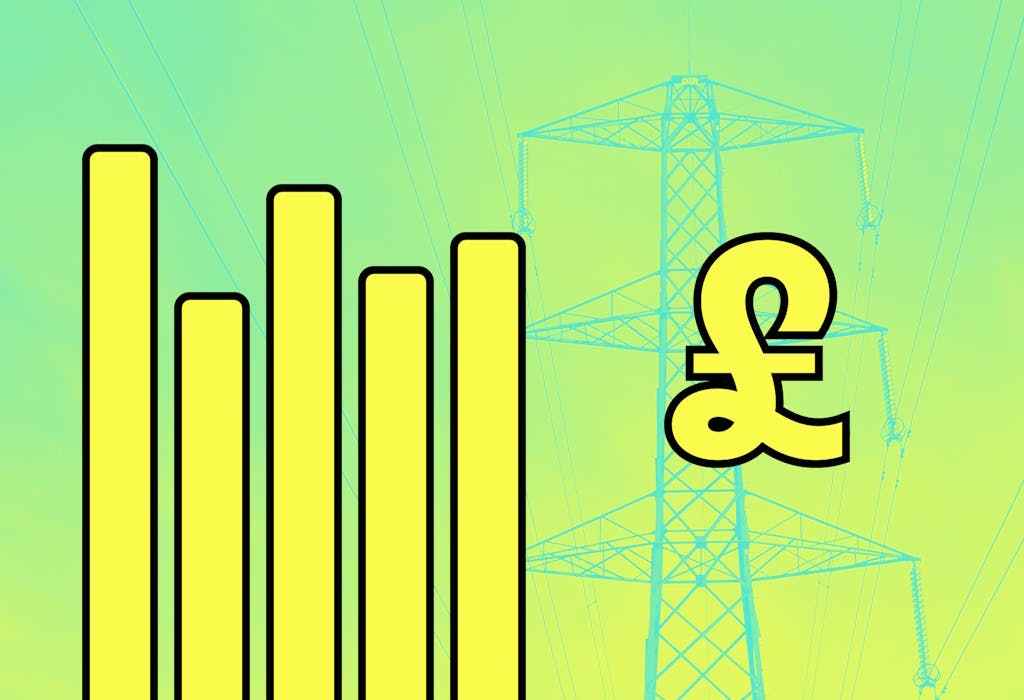- Solar advice hub
- Exporting-to-the-grid
- OVO’s SEG tariff: is it worth it?
OVO’s SEG tariff: is it worth it?
Here are all the ins and outs of OVO’s export tariffs, including their rates, requirements, and which import rates they pair best with.


Why you can trust our content
We know that the solar industry is full of misinformation, but we only use reliable sources, including:
- Our experienced solar experts, installers and system designers
- Our own database of solar & battery system designs
- Authoritative bodies like MCS and the UK government



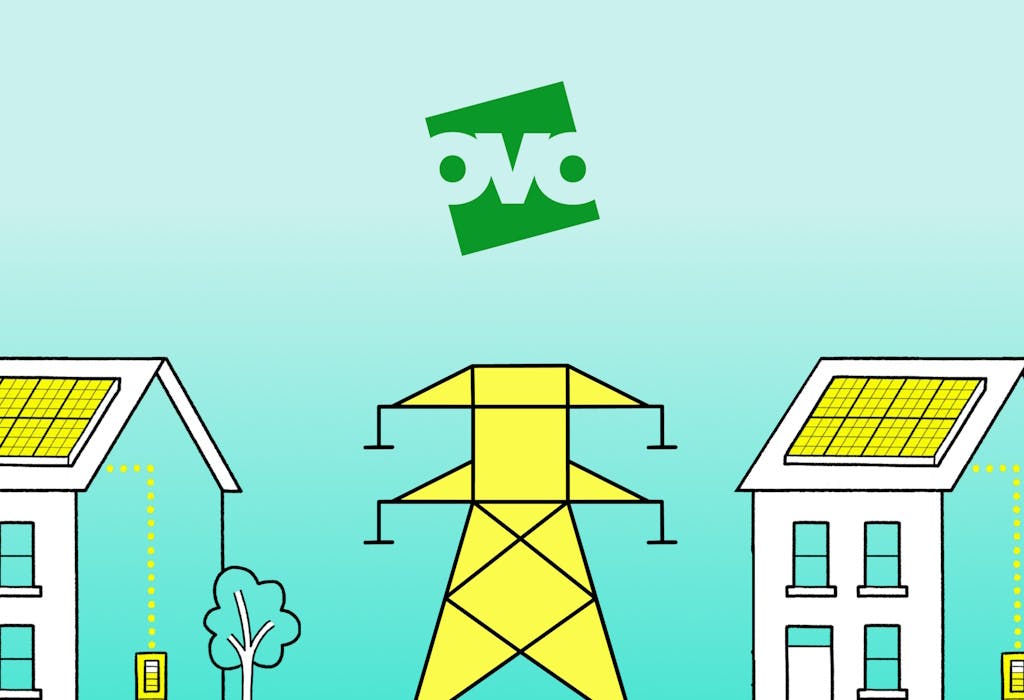
Calculate savings
What kind of home do you live in?
Calculate savings
What kind of home do you live in?
OVO’s SEG tariff: at a glance
Every household with solar panels should be regularly looking around to ensure they’re on the best export tariff possible – and OVO is one of the biggest energy suppliers in the UK.
The supplier, which has roughly four million customers, offers a variety of tariffs that includes one of the highest rates around.
In this guide, we’ll explain the ins and outs of OVO’s three export tariffs, including their rates, eligibility requirements, and sign-up processes, as well as which import rates they pair best with.
If you’re wondering how much you could save with a solar & battery system, enter a few details below and we’ll provide an estimate.
Find out how much you can save
What kind of home do you live in?
What SEG tariffs does OVO offer?
OVO currently offers three Smart Export Guarantee (SEG) tariffs:
- OVO’s standard SEG tariff
- OVO’s SEG Beyond Exclusive
- OVO’s SEG Install Exclusive
The SEG is a UK government initiative that replaced the Feed-in Tariff (FiT) in 2020, and which compels energy suppliers with at least 150,000 domestic electricity customers to pay homes for any electricity they send to the grid.
Solar homes can choose any provider’s tariff, though companies usually reserve their best export rates for their own electricity customers.
These rates have been climbing for years, as suppliers attempt to attract more households with increasingly appealing offers.
Homes with a solar & battery system can now earn hundreds of pounds per year on the right export tariff.
Let’s run through OVO’s options to see if any of them are right for you.
1. OVO’s standard SEG tariff
Export rate: 4p/kWh
To qualify for this basic tariff, you simply have to generate renewable electricity at home.
Your solar panel system can be installed by any company, and your electricity can be provided by any supplier.
As long as you have solar panels – or another renewable electricity source, like wind, hydro, anaerobic digestion, or micro combined heat and power (micro-CHP) – you can access this 4p per kilowatt-hour (kWh) rate.
That means there are no strings attached, which is a plus – but you can earn three times more if you import your electricity from OVO. More on that just below.
For more information, check out our comprehensive guide to the best SEG rates.
Which import tariff should you use?
The best import tariff to use with this export rate is British Gas Electric Driver.
As OVO doesn’t limit your options when you’re on its standard SEG tariff, you’re free to use the top import rate around.
British Gas Electric Driver is a time of use tariff that's open to homes with a solar & battery system, whether or not you have an EV.
Every day from 12am to 5am, you can charge or power items in your home for 7.9p per kilowatt-hour (kWh), wherever you are in the UK.
At other times, you’ll pay around 27p per kWh, which is higher than the July 2025 price cap – though the exact rate depends on your home’s location.
If you shift a big chunk of your electricity usage to the off-peak period – and use this cheap electricity to charge your battery every night – you can save hundreds of pounds per year.
2. OVO’s SEG Beyond Exclusive
Export rate: 12p/kWh
In February 2025, just after Ofgem raised the electricity price cap to 24.86p per kWh, and just before it increased it to 27.03p per kWh, OVO cut its middle export tariff by 20%.
The 15p per kWh rate fell to 12p per kWh, adopted a new name, and – in a crucial, positive move – dropped the requirement to install through OVO.
You can now get your solar panels from any company and qualify for this tariff.
OVO has replaced that condition with a different, less burdensome one: you must join a free service called OVO Beyond within three months of signing up for SEG Beyond Exclusive.
OVO Beyond, which launched in May 2024, gives customers the ability to attain savings and discounts by shifting their electricity usage, buying the company’s products, and staying loyal to OVO.
So it’s easier to join this tariff now.
Your solar panel system also can’t be larger than 30 kilowatts-peak (kWp), but that applies to barely any domestic installations in the UK.
Which import tariff should you use?
This tariff’s requirements mean you have to sign up to an OVO import tariff.
The best choice at the moment is OVO 1 Year Fixed, a 12-month tariff which offers a price cap-beating rate of 23.75p per kWh of electricity.
Its standing charge of 51.15p per day is also lower than the 53.8p per day maximum included in the price cap.
You’ll have to pay an exit fee of £75 per fuel if you switch tariffs before the end of your contract, but this usually easy enough to avoid.

3. OVO’s SEG Install Exclusive
Export rate: 20p/kWh
OVO’s best tariff pays out 20p per kWh, which is up there with the very best export rates.
There are just a couple of conditions.
You have to buy your solar & battery system through OVO, and also get your grid electricity from OVO.
So unfortunately, if you’ve already gone solar, you can’t access this tariff.
You can still sign up to SEG Install Exclusive if you get your solar panels through OVO and have your battery installed by a different company, but you’ll receive 15p per kWh instead.
The 30kWp upper limit also applies to this tariff, though this won’t be an issue for the vast majority of homes.
Along with the top-tier rate of 20p per kWh, there's another upside to choosing this rate, in the form of Battery Boost.
What is OVO’s Battery Boost?
Battery Boost is an add-on to the SEG Install Exclusive tariff that allows OVO to fill your battery with off-peak electricity, then sell it back to the grid at peak times.
The grid charges suppliers different prices depending on the demand and supply at any given time – so OVO will analyse these prices and choose the best times to sell and buy through your battery.
However much money OVO makes from this process, you’ll pay 10p for every kWh your battery imports, and earn 20p for every kWh your battery exports – resulting in a profit of 10p per kWh.
Roughly speaking, OVO will charge your battery to 70% each day in winter, when solar panels generate less electricity, and to 40% in the summer.
If you have a 5.2kWh battery, this means OVO will import and export around 1,030kWh per year – earning you £103 without you doing anything.
Octopus provides similar services through its Intelligent Octopus Flux (IOF) and Intelligent Octopus Go (IOG) tariffs.
On IOF, which is an import and export tariff, Octopus will control when your battery charges and discharges, to maximise your profits.
IOG is an import tariff aimed at electric car drivers that can charge your EV when it’s the cheapest time for Octopus to buy electricity from the grid – and whenever it happens, it costs you 7p per kWh.
Which import tariff should you use?
Just like on SEG Beyond Exclusive, you’ll need to choose an OVO import tariff.
Currently, your best option is OVO 1 Year Fixed, a 12-month tariff which comes with an import rate of 23.75p per kWh.
This is lower than the price cap, as is its standing charge of 51.15p per day, which comfortably beats the 53.8p per day maximum set by Ofgem.
It does include an exit fee of £75 per fuel if you change tariffs before the end of your contract, but this is relatively simple to avoid.
How much can you earn from OVO’s SEG tariffs?
A solar home can make a considerable amount of money on any of OVO’s SEG tariffs, though SEG Install Exclusive is clearly the highest earner.
| Name of OVO tariff | Average annual export income |
|---|---|
| SEG Tariff | £91.49 |
| SEG Beyond Exclusive | £143.58 |
| SEG Install Exclusive | £239.29 |
These figures are based on a household with a 4.6kWp system and a 5.2kWh battery, which are standard sizes, solar irradiance of 850kWh per kWp, and an annual electricity consumption of 3,400kWh, which is the UK average.
We’ve also assumed that the household will export 34% of its solar-generated electricity, and self-consume the other 66%.
As well as your self-consumption level, there are several other factors that’ll affect your export income on any of OVO’s tariffs.
These include your property’s location, your roof’s angle and direction, your system’s peak power rating, and the weather. These all affect how much daylight your panels receive, and how effectively your system converts that light into electricity.
It also matters which import tariff you choose, which is why we’ve factored in this consideration in our guide to the best SEG rates.
If you’re wondering how much you could save with a solar & battery system, enter a few details below and we’ll generate a quick estimate.
Find out how much you can save
What kind of home do you live in?
Eligibility requirements for OVO’s SEG tariffs
All three of OVO’s export tariffs require you to live in an eligible area – which the great majority of Brits do – and produce renewable energy at home.
The supplier used to attach a £15 exit fee to all three tariffs, but got rid of it in 2025.
Additional requirements for OVO SEG Beyond Exclusive
This 12p per kWh tariff allows households to install solar panels with a power rating of 30kWp, at most – which is more than enough for the vast majority of UK households.
You also have to receive grid electricity from OVO, and join OVO Beyond within three months of signing up for SEG Beyond Exclusive.
Additional requirements for OVO SEG Install Exclusive
To access this tariff’s 20p per kWh rate, you must buy your solar & battery system through OVO.
However, you can qualify for a 15p per kWh rate if you only get your solar panels from OVO.
You’ll also need to import your grid electricity through OVO, and have a solar panel system that’s under 30kWp.
How can you sign up for an OVO SEG tariff?
Signing up for any of OVO’s export tariffs requires you to fill out an online form.
You’ll also have to give OVO your Microgeneration Certification Scheme (MCS) or Flexi-Orb certificate, a schematic of your system, and your G98 or G99 application.
OVO will need an approval letter from your Distribution Network Operator (DNO) – that is, the company that runs the hardware supplying your area of the UK with electricity.
You may also have to hand over some proof of identity – such as a copy of your passport – and proof of address, like a utility bill that has your name on it.
Your DNO should also supply OVO with an export MPAN (Meter Point Administration Number) – a unique, 13-digit number that identifies your electricity meter.
How long does it take?
The process can take up to 11 weeks in total, which puts it on a par with other export tariff suppliers.
Make sure you ask OVO for your export payments to be backdated to the day you submitted your export tariff application form, as companies are sometimes open to this.
Is OVO’s SEG tariff worth it?
OVO’s SEG Install Exclusive tariff is one of the most generous export tariffs on the market.
Its 20p per kWh SEG Install Exclusive rate allows households to earn hundreds of pounds per year from selling their excess electricity to the grid.
And if you don't want to go solar through OVO – or if you already have solar panels installed – the supplier's 12p per kWh SEG Beyond Exclusive tariff is very decent.
All you need to do to qualify is to get your grid electricity from OVO and join a free service called OVO Beyond, which can help you save even more money.
If you’re wondering how much you could save with a solar & battery system, enter a few details below and we’ll provide an estimate.
Find out how much you can save
What kind of home do you live in?
OVO’s SEG tariff: FAQs
Related articles

Written byJosh Jackman
Josh has written about the rapid rise of home solar for the past six years. His data-driven work has been featured in United Nations and World Health Organisation documents, as well as publications including The Eco Experts, Financial Times, The Independent, The Telegraph, The Times, and The Sun. Josh has also been interviewed as a renewables expert on BBC One’s Rip-Off Britain, ITV1’s Tonight show, and BBC Radio 4 and 5.


